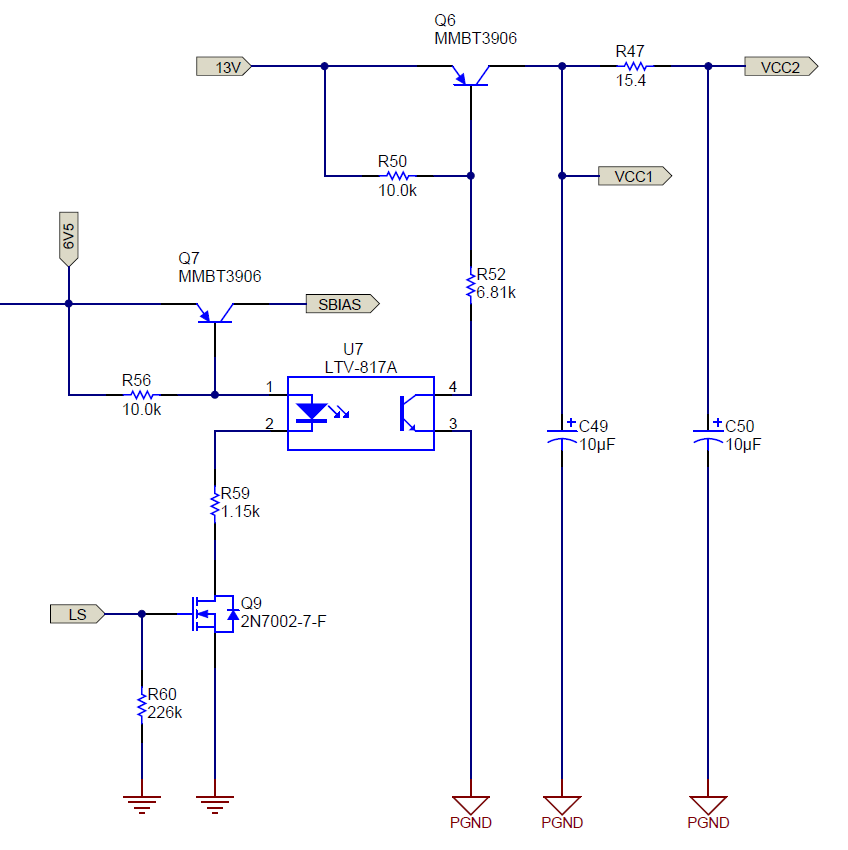Other Parts Discussed in Thread: UCC27714
Dear All,
please consider the schematics of TIDA-00355 ref design in the bellowing link:
please see page 3 of the pdf file. there is a bias circuit based on the flyback controlled with UCC28722.
please consider the bellowing section of the page:
i have some questions about above circuit.
G1- why SBIAS, VCC1, and VCC2 are switched ON/OFF by LS ( a signal in page 2 )? in fact; why they aren't connected directly to their loads?
G2- why VCC1 ( supply for PFC converter in page 1) and VCC2 ( supply for half bridge converter in page 2) are divided by R47? why a common supply voltage is not used for both of PFC and half bridge?
Best Regards, Ras


